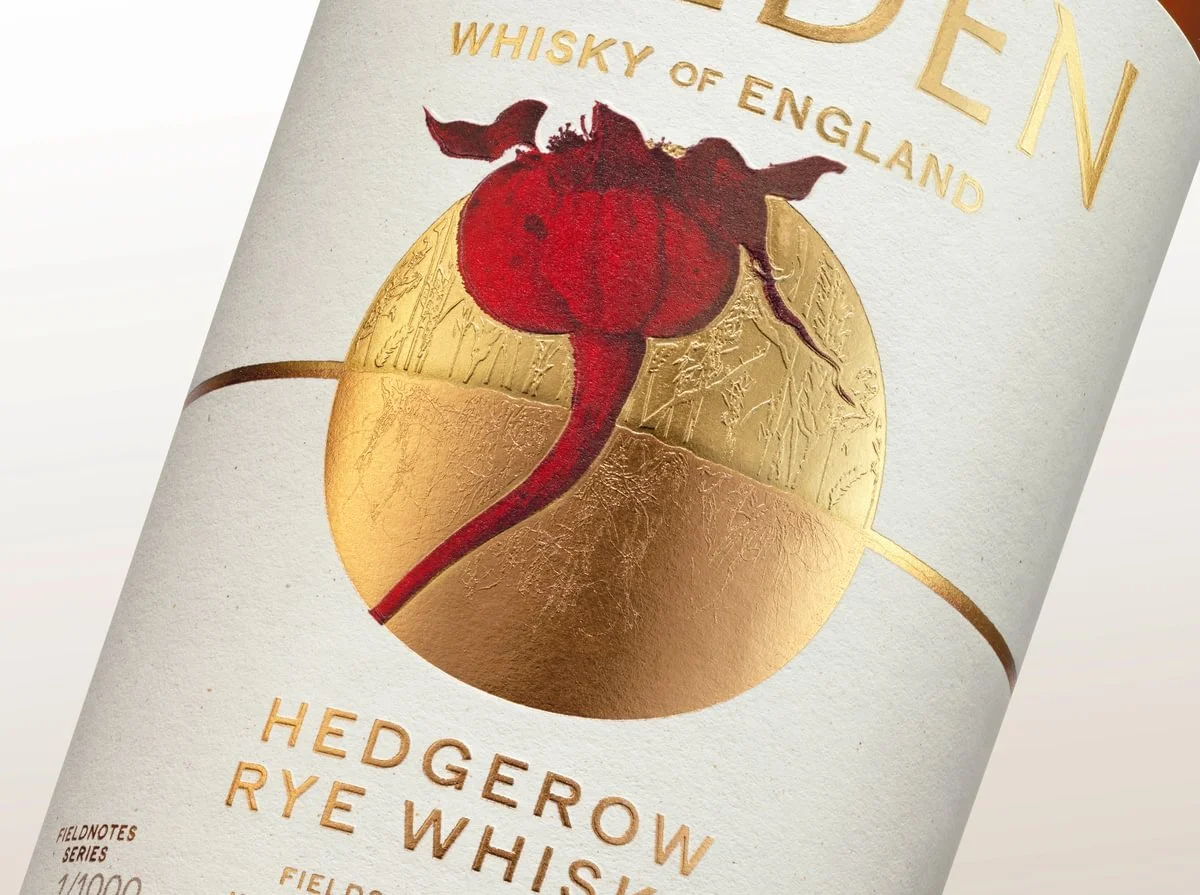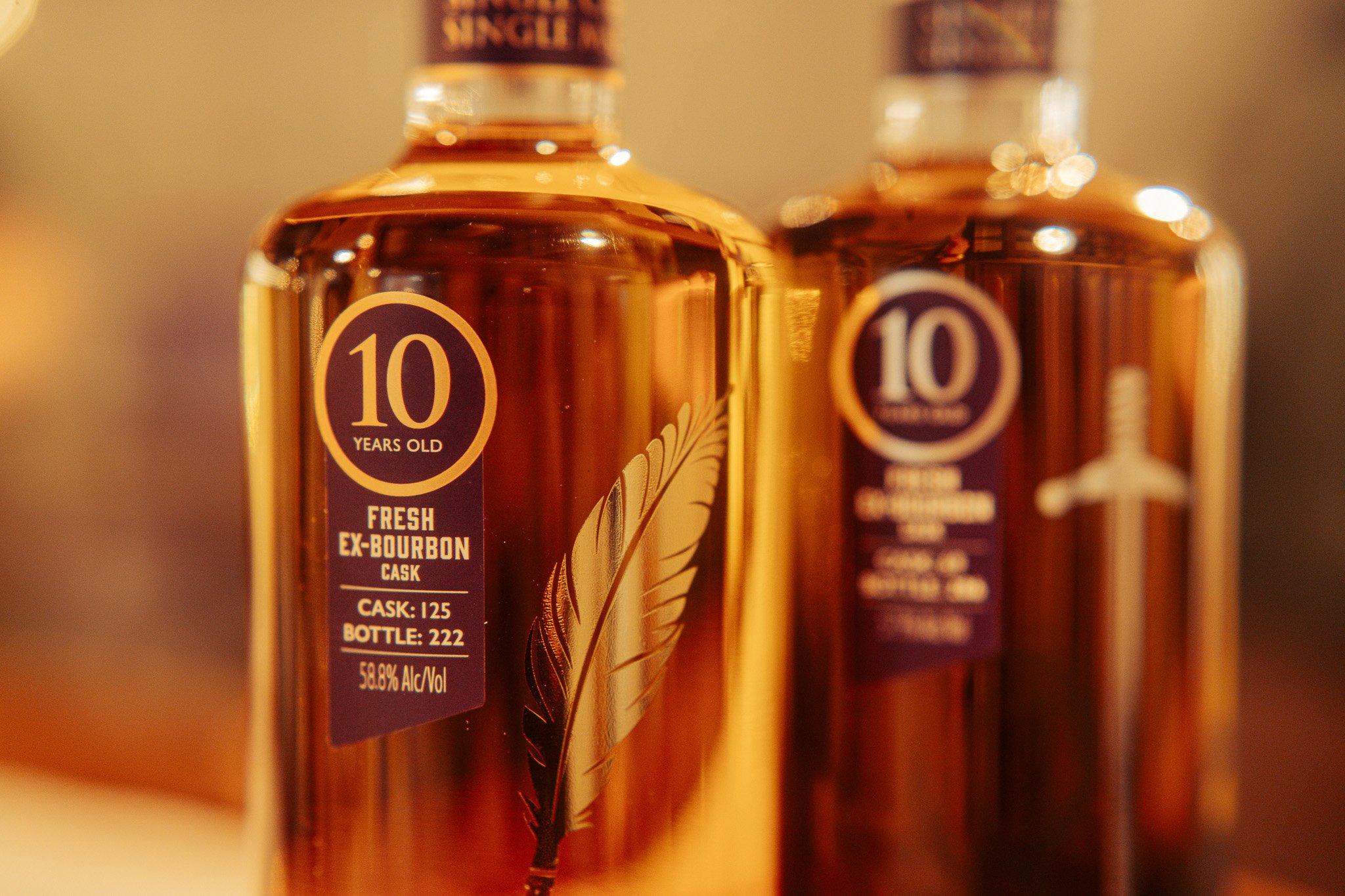Fruits of labour: How Fielden made the mighty Hedgerow
Bottling nature: A whisky inspired by the damsons, sloe berries, hazel trees, elder trees and wild apples found in hedgerows
Fielden’s unique take on regenerative farming and putting the grain first, has produced something special for their first limited edition rye whisky, Hedgerow, discovers Tom Pattinson
I’ve spent a lot of time this year trudging through muddy fields, fingers in soil, looking for worms, inspecting roots, and learning an entirely new vocabulary relating to pre-industrial ways of farming.
This is because I have become rather enamoured by English whisky maker Fielden and the emphasis they put on whisky’s most core ingredient – the grain. I’ve visited their fields in the summer, when tall stems of rye waft in the warm breeze, and I’ve been there when the damp soil was freshly seeded after the heavy autumn rains. Their innovative use of organic, heritage grains and regenerative farming is something that other whisky makers will surely be looking to emulate. But after so many field trips, it was a joy to finally be able to enjoy the fruits of Fielden’s labour at an intimate dinner in a warm dry restaurant in central London.
Tonight, I’m sitting next to Chico Rosa, Fielden’s whisky maker, for the launch of Hedgerow. This is Fielden’s first of four releases under the Fieldnotes series and just a thousand bottles of this first release are available. Each of the four annually released chapters will take inspiration from different elements of the fields. Or in the case of Hedgerow, the bushes that divide the fields.
“Hedgerows are composed of damsons, sloe berries, hazel trees, elder trees and wild apples,” says Rosa with a certain air of romance. “If you walk through the English countryside in winter and see a hedgerow, you can find ripe rosehips. When you squeeze the rosehip there is this beautiful puree coming out that’s like baked apple, and that was my inspiration for this whisky,” he says.
Food arrives, delicious fresh raw vegetables and seasonal roasted pumpkin, food straight from the field. It’s easy to forget that Fielden only officially launched in May of 2024, rebranding from their previous incarnation of The Oxford Artisan Distillery (TOAD). Hedgerow is already their third product after their core product ‘Fielden Rye Whisky’ and the ‘Harvest 2019 Rye Whisky’ which was released in August and named after the year of the grain harvest. Fielden don’t provide age statements but instead, like a wine, the year on the bottle is the grains’ vintage.
“2019 was quite a challenging year to grow grain,” Rosa tells me. “It was a year that was quite cold and wet – especially in summer, so the grain was quite green.” The Fielden farming team had to dry the grain post-harvest.
From field to table: a dinner shared and celebrated among friends
“Having a good or bad grain growing year doesn’t necessarily impact the quality of whisky, but it certainly impacts the composition of the grains from what the whisky is made of. Grain growing always reacts to the growing season conditions,” he explains. “The rain levels, temperatures, sunlight hours and so on. We get variable yields and quality variables of the grain, such as levels of starch [sugars] and proteins that are direct factors impacting the whisky making process and its flavours.”
With the focus of most whisky brands on the distillation and maturation processes it’s refreshing to listen and learn of the complexities and huge variables that will affect the flavour of grain. Rosa delves into the science of it, telling me how different weather conditions produce different yields, different soils produce different percentages of proteins, different grain development can affect sugar conversion, all of which affect the flavour, boldness, viscosity and myriad other factors of the final produce in the bottle that sits in front of us.
“A greener rye grain translates into a more herbaceous and herbal spirit with added spiciness,” says Rosa. “It’ll produce a lower yield of litres of alcohol per kilogram of grain, but overall an incredibly elegant and punchy taste. Hot and humid summers would allow for a big yield, and will develop grain with a full-on sugar conversion, whereas a dry and hot summer tends to be difficult for the grain to fully develop with the lack of water, perhaps slightly lower yield. Different percentages of protein can bring bolder notes and increased body to the spirit.”
‘When you squeeze the rosehip there is this beautiful puree coming out that’s like baked apple, and that was my inspiration for this whisky’
Rosa is giving me a science lesson. It serves as a reminder of the many layers of complexity that go into making a spirit that consists of just three ingredients: grain, water and yeast. So how much influence does the grain have?
“We can’t deny the impact a yeast or fermentation temperatures have in the ferment, and even more so when it comes to the impact of a cask over others in the final spirit. But we can’t forget, the base of any whisky is grain,” he says. “That grain has a set composition of chemicals by the time it is milled and mashed. Molecules that will influence how they ferment, regardless of what temperature there is or yeast is used. Therefore, these grains will impact how the ferment distils, if there are more heads or tails, if the result is fruitier or earthier.”
Rare rye: Only 1,000 bottles of this limited release are available
Beyond the grain, Hedgerow is a combination of four very different casks, maturing the same grain recipe but with different field origins. Two casks contained spirit where the rye and wheat were grown separately, the other two were produced exclusively through maslin and malted barley. Maslin is one of the new words I have learnt on this journey. It means a mix of grains, in this case multiple varieties of rye and wheat strains all grown together in one field.
“Rye is a spicy and herbal grain whereas wheat spirits are softer and creamier. We like to believe that when grown together, these grains benefit from each other,” says Rosa.
‘Ensconced in a moment of contented satisfaction, I couldn’t help but think of a bygone era. An era where folk would feast by candlelight on the bounty of their fields’
For the casks themselves, Fielden used a compelling and unusual mix. Two used American oak barrels, packed with fruit character from fermentation and with rich and creamy notes, alongside a Sauternes barrique, which Rosa says complemented the rye punchiness with the taste of stone fruits and spice. Finally an old Vintage Port barrique, previously used for a few decades for champagne wine, brought the X-Factor, as Rosa called it.
“Vintage Port only matures for two years in cask and then 50 to 100 years in a bottle to allow time to soften its tannins,” says Rosa. “For us, this young port cask brought the jammy and fresh red notes to Hedgerow – packed with tannins just like the sloes and damsons growing in the hedges of a field.”
The result? An exquisite creamy jammy dram with baked apples (something Rosa describes as the Fielden trademark flavour) with a nutty liquorice finish.
Kings of grain: Fielden whisky maker Chico Rosa (left) with farmer Richard Tustian and Head of Farming Hugh Forsyth
As the main courses are tidied away, tales are shared over another mighty Hedgerow dram. The candles flickered as they burned low and cast shadows across the table adorned with wild flowers from British hedgerows. Ensconced in a moment of contented satisfaction, I couldn’t help but think of a bygone era. An era where folk would feast by candlelight on the bounty of their fields. Where they would share stories of travels and adventure among friends whilst drinking ales and spirits made from these same ancient grains that made our drinks this evening. And centuries on, here we are, sitting in the early winter darkness, drinking and feasting on the English countryside’s bounty as happy and content as can be.
Fielden’s Hedgerow Rye Whisky is available now priced £100. Subscribe to Barley’s newsletter before November 22nd to be in with the chance to win a bottle.








